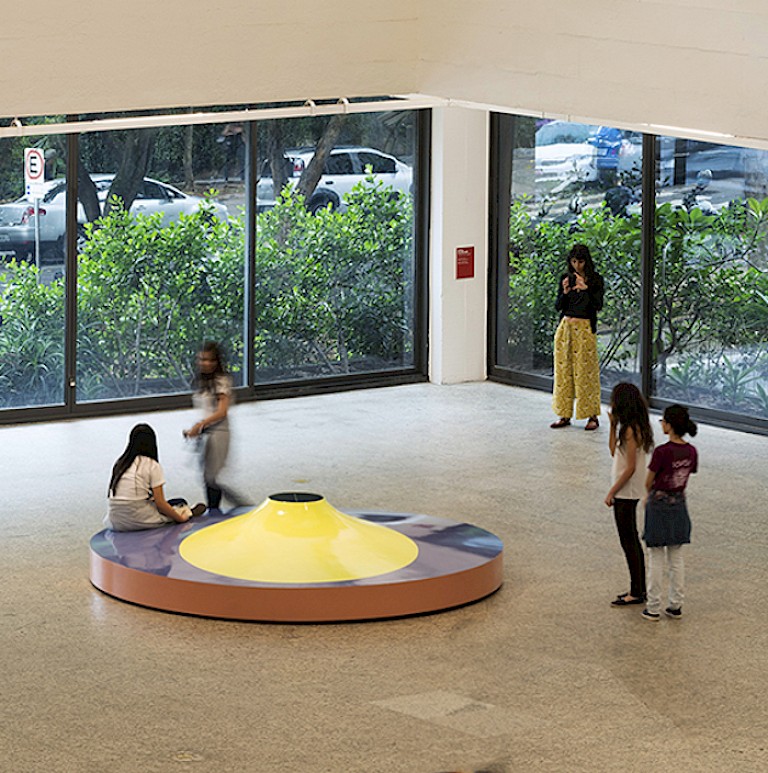



In a question posed to Condorelli in an interview asking her about how Conversation Piece was received at the MASP in Brazil, she responded:
“I don’t know really, but the one feedback I got was through Instagram; that’s how you know how people interact with you stuff and there’s a number of Instagram posts of people photographing their children, making little films with the carousels, posing, or whatever. That I think is the biggest compliment.”
For Condorelli, the stress on producing the object has always been independent of the way the object is received. As the title suggests, the opening of an avenue for conversation is the sufficient gesture. The well-crafted nature of her installations and objects ascertain their positive reception.
Explorations of play that are cognizant of the public spaces in which they are installed and also seek to de-hierarchize existing systems of knowledge by inviting a sensory interaction by the young visitors of spaces are what makes Condorelli’s Conversation Piece very special. This work’s success is further exemplified by the manner in which it inspired continued research and artistic production in the years that followed. Her experimentation with further structures of play in collaboration with different art spaces has become one of the hallmarks of Condorelli’s artistic practice.
Her work with MASP remains special to this day because of the intimate connection with the work of Lina Bo Bardi whose architecture, research, and writings informed the usage of space and the ideas behind activating the art museum beyond its traditional functions.


